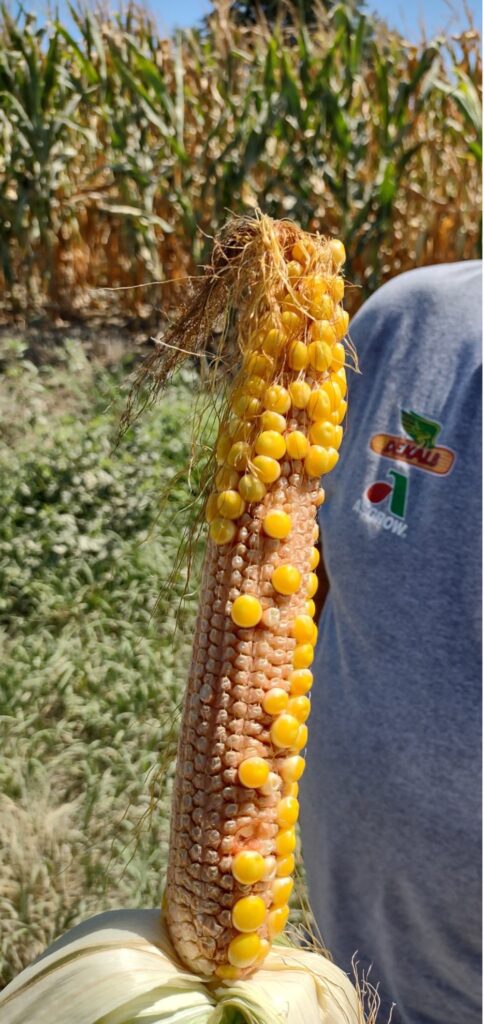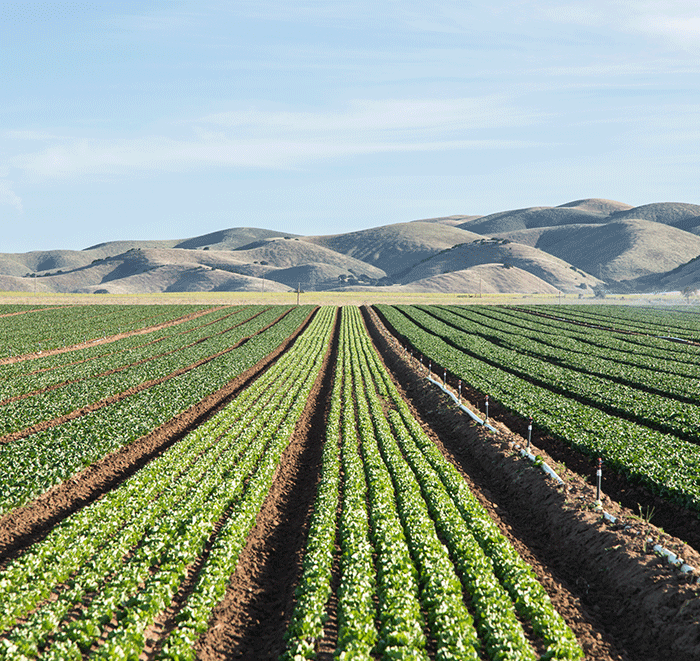

Tipping Back & Pollination Issues in Corn
Ears have or are beginning to flex downward prematurely as the vascular tissue in the rind of the ear have collapsed with lack of available plant moisture. This is can also cause the grain that has developed to remain wetter in grain moisture as we trend towards harvest.

Stalk Quality
Stalk Qualitywill likely be an issue this fall. When dry conditions exists, the plant robs from the stalk water, carbohydrates and starch and moves them into the ear in an attempt to fill out the ear and add test weight. In doing this, the plant stalk strength weakens and allows stalk rot to invade the plant. Stalk rot is common and “broad” term for a number of problems that invades every year in every corn field to some extent and although no hybrid is entirely tolerant, genetics with poor stalk and root strength will have more of a standability problem. It is a product of soil type, fungus in that soil, and the environment. Environmental stresses like leaf diseases, hail, over-population, excessively dry or water saturated soil, etc. all play a motivational role in the development of the fungus. Many fungi can cause stalk rot and can survive in the soil for several years. Evaluate the stalk quality of your corn prior to harvest by splitting stalks, or try to crush the stalk in your fist from the soil line up through the 3rd node above the soil line and look for soft brown tissue at the base (crown) of the plant. This process will help to not only determine the extent of infestation but also a harvest timeline of affected fields/hybrids.
In silage country, nitrate poisoning in cattle can occur as a result of forage (corn, sorghum. sudangrass) chopped for silage during a dry production year. Nitrate concentrations in feeds for livestock depends more on plant species and environmental conditions prior to harvest than on the amount of available nitrogen in the soil. Most forages contain some nitrates. When feeds containing nitrates are consumed by ruminants, nitrates are changed in the rumen to ammonia that is, in turn, converted by bacteria in the rumen into microbial protein.
Nitrite is one of the intermediate products in the breakdown of nitrate and is the cause of nitrate poisoning. Some nitrite is absorbed into the bloodstream. Nitrite in the bloodstream changes hemoglobin to methemoglobin.
Hemoglobin carries oxygen from the lungs to other tissues but methemoglobin is incapable of carrying oxygen. Thus, nitrates become a problem when enough methemoglobin is produced that the oxygen carrying capacity of blood is reduced to a critical level. If enough methemoglobin is produced (more than 80 percent of the total hemoglobin) the animal will die. The toxic level depends both on the amount of nitrate in the feed and how fast the feed that contains nitrate is consumed. For example, it takes about twice as much nitrate to kill a ruminant when the nitrate comes from forages that are eaten over a long period of time compared to a supplement or a drench that is consumed quickly.
Nitrates taken up from the soil by plant roots normally are incorporated into plant tissue as amino acids, proteins and other nitrogenous compounds. The primary site for converting nitrates to these products is the actively growing green leaves. Nitrates accumulate in the stalk or stem of plants when factors interfere with normal plant processes.
All plants contain some nitrate, but excessively high amounts are likely to occur in forages having been grown under stress conditions such as: shading or low light intensity; detrimental weather, including drought, frost, hail, low temperatures; herbicide applications; diseases. The amount of nitrate in plant tissues also will depend on: plant species; stage of maturity; part of the plant; and nitrogen fertilization. **Courtesy University of Nebraska Animal Science
Dr. John MacNamara, Wilbur-Ellis Agronomist

